Anyone familiar with the goings-on in the horological world would attest to the fact that the trend of reviving vintage watches is popular. Today, there are few mainstream luxury watch brands that haven’t looked at their past to resurrect some of the most beloved, extraordinary timepieces from their legacy, or even just sought inspiration from them to create modern versions. From models that were part of culturally defining moments and timekeepers inspired by art movements, to superlative calibres and tool watches that were part of expeditions, revivalist watches come in different shapes, sizes, and stories.
Understandably, this trend isn’t restricted to any particular time or era. Watchmakers have taken the liberty to pick and choose vintage watches from different time periods, depending on how pathbreaking they were for the time when they debuted, their impact then, and their potential for success in the contemporary market.
However, if one were to examine the retro offerings of the recent years closely, it is evident that watches of the 1970s and their design language seem to have taken precedence.
 Tissot PRX Chrono
Tissot PRX ChronoUndoubtedly, the 1970s were far from perfect for the mechanical watch industry. The decade witnessed the Quartz Crisis, which crippled the Swiss watch industry. But thanks to innovation and creativity, luxury watchmakers were able to craft unique and robust timepieces which, over the course of a few years, not only helped bring the focus back on mechanical watches, but also catapulted these designs into the hallowed league of modern classics. These legendary watches eventually attained cult status and are much sought-after today. Naturally, brands have not only revived them but also introduced contemporary versions that take inspiration from their designs.
From Crisis Comes Opportunity
It was Albert Einstein who said, “In the midst of every crisis, lies great opportunity,” and the same was true for Swiss watchmaking amidst the Quartz Crisis. It all began when the Japanese watchmaker Seiko introduced its first quartz timepiece, the Astron—a watch that offered an accuracy of mind-boggling +/-5 seconds per month, in December 1969. Thanks to its inexpensive price tag and peerless performance, the Astron became an instant hit and led to the rise of quartz watches. Meanwhile, the Swiss industry, initially, witnessed this from a distance and continued manufacturing those mechanical designs and movements that were popular during the 1950s and 60s. Subsequently, the sales of mechanical watches plummeted, forcing several Swiss watchmakers to shut down their production and go out of business. However, there were a handful of brands that managed to stay afloat by pushing the boundaries of innovation and crafting unique timepieces, which ultimately lured back the customers.
Designs That Changed Fortunes
When it comes to the designs that have had a lasting impression on the horological world, the Audemars Piguet Royal Oak (1972) and the Patek Philippe Nautilus (1976), both conceived by the legendary designer Gérald Genta, lead the charge. They gave birth to the genre of the modern luxury sports watch. Although these timepieces weren’t immediate successes they broke several stereotypes while offering a bold, angular design in steel, and larger and thinner cases. But the foremost reason that helped them quickly gain an ardent following was the integrated bracelet. Their distinctive silhouette not only drew more attention to the dial, but also offered a seamless flow between the case and the bracelet, giving the timepieces a futuristic look.
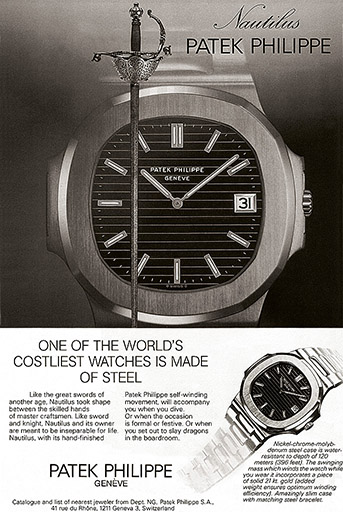 The original Patek Philippe Nautilus broke several stereotypes
The original Patek Philippe Nautilus broke several stereotypesOver the years, the popularity of Nautilus and Royal Oak hasn’t diminished at all; if anything, it has only grown stronger, and the watches are apex pieces in any collector’s watch box. This year, Audemars Piguet celebrated the 50th anniversary of the Royal Oak and released a wide variety of models in various sizes that feature different complications, innovative materials, and high-performance movements. Meanwhile, after discontinuing the iconic Nautilus 5711 variant, Patek Philippe is all set to release its successor soon. Not only this, models like the Nautilus 5711/1A-018 Tiffany & Co. and Nautilus 5711/1A-014 green dial—both launched in 2021—enjoy huge demand in the pre-owned market.
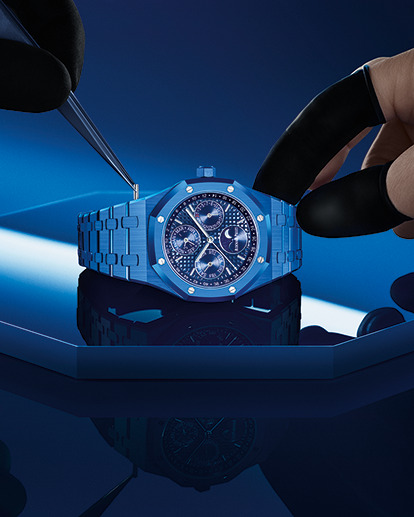 To celebrate the 50th anniversary of the Royal Oak, Audemars Piguet released a slew of new models
To celebrate the 50th anniversary of the Royal Oak, Audemars Piguet released a slew of new models
It wasn’t as if only these two creations by Genta made a dent in the market. Another timepiece that generated a lot of buzz was the Vacheron Constantin 222, designed by the Swiss Jörg Hysek, which was introduced in 1977. Released in different sizes, including 24mm, 34mm, and 37mm, the watch stood apart with its barrel-shaped case, unique bezel, and the brand’s iconic Maltese Cross recessed into the case at the 5 o’clock position. Moreover, it came with an eye-catching, integrated hexagonal-link bracelet that elevated the overall look of the watch. Over time, the success of the Vacheron Constantin 222 was such that it deeply inspired the watchmaker’s modern-day Overseas collection. Therefore, it didn’t come as a surprise when the watchmaker reissued the timepiece this year, calling it Vacheron Constantin Historiques 222.
Although the latest watch retains more or less all the key features of the original timekeeper, it comes with a handful of contemporary updates. Housed in a 37mm 18K yellow-gold case, the Vacheron Constantin Historiques 222 is powered by Calibre 2455/2, which beats at the frequency of 4Hz and offers a power reserve of up to 40 hours. It also now features a quick-set date. Instead of the monobloc construction of the original, the reissue has a three-part construction, with an independent caseback that has a sapphire crystal. Additionally, it has a water resistance of up to 50 metres.
 The Vacheron Constantin Historiques 222
The Vacheron Constantin Historiques 222This is not the first time that Vacheron Constantin has revived a vintage watch. But one could argue that the launch of the Historiques 222 comes at a time when the market is looking at a spot left vacant by the Nautilus 5711.
The fandom for these luxury sports watches isn’t limited to just the revival of specific timepieces. Designs from the 70s have had influence on recent watch releases as well. Case in point is one of the most talked about releases of last year, the Tissot PRX Powermatic 80. The budget watch is nothing short of a perfect throwback to the 70s as it comes with a barrel-shaped case, integrated bracelet, a dial with a chequered pattern, and a formidable movement. Seen as an affordable alternative to high-end sports watches, its success led Tissot to come up with several new models this year, chronographs including.
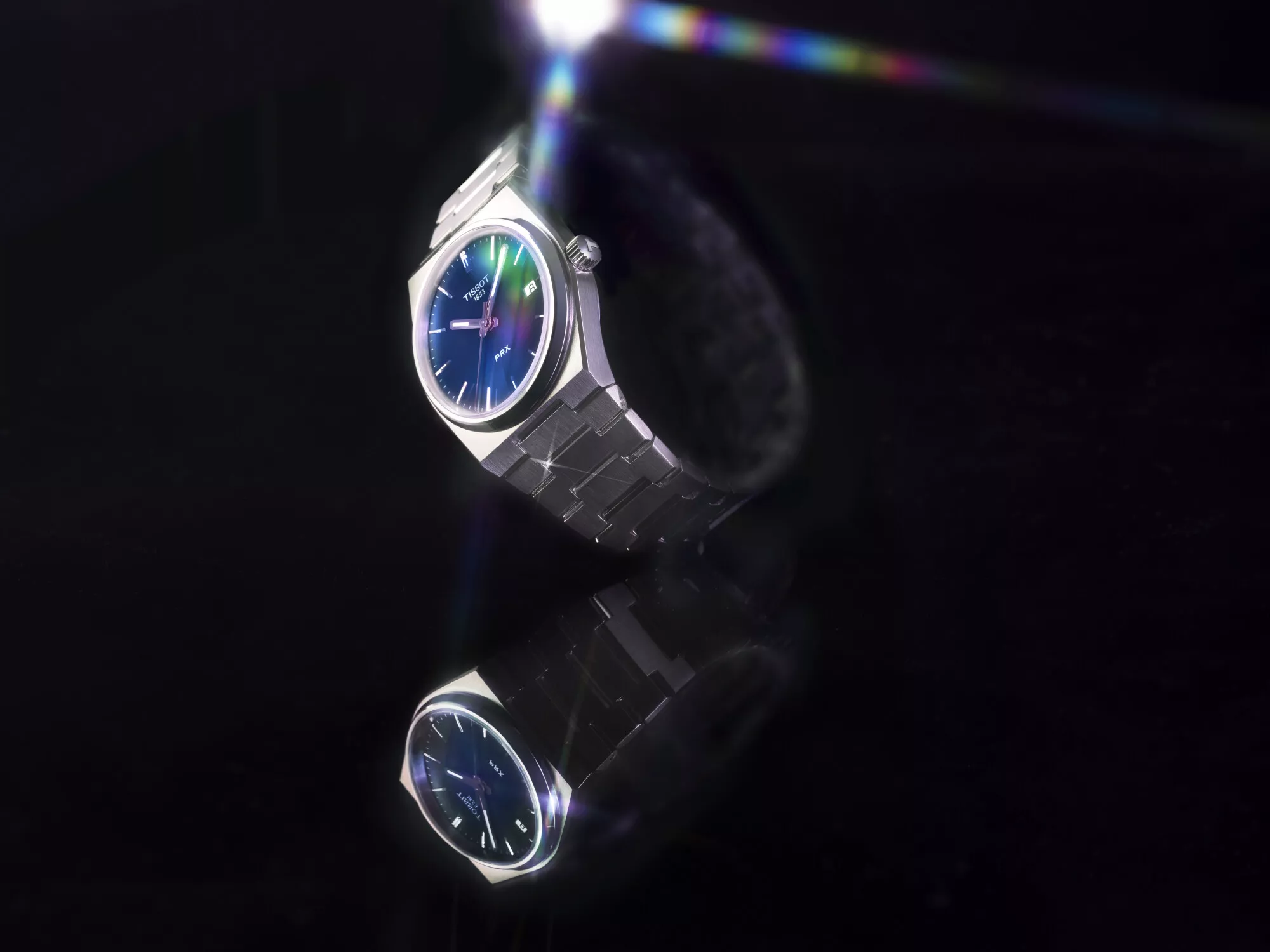 Tissot PRX 35mm
Tissot PRX 35mm
While the Nautilus, Royal Oak, and 222 reestablished the dominance of mechanical watches in the industry in 70s, timepieces like the Casquette by Girard-Perregaux proved that Swiss watchmakers were fully capable of building extraordinary quartz timekeepers. With its idiosyncratic design, reminiscent of a 70s muscle car, with an LED display like taillights, the watch (originally called ‘Reference 9931’) was the culmination of the brand’s quartz research programme, which began in 1966, and received admiration from critics and enthusiasts alike. During its production between 1976 and 1978, Girard-Perregaux made around 8,700 units of the timepiece and it subsequently turned out to be one of the most coveted models of its time.
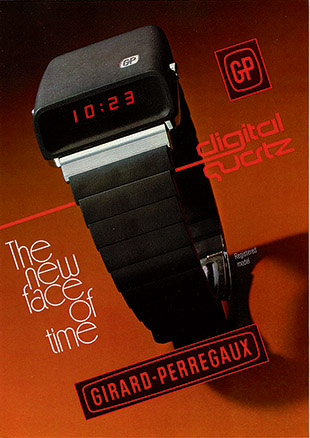 The Girard-Perregaux Casquette was one of the most coveted models of its time
The Girard-Perregaux Casquette was one of the most coveted models of its timeTo pay homage to this illustrious legacy, the watchmakers, in February 2022, introduced the Casquette 2.0, a modern rendition of the beloved watch, crafted from the scratch-resistant ceramic case while featuring an ultra-light grade 5 titanium caseback. The timepiece measures 42.4mm in length, 33.6mm in width, and has a thickness of 14.64mm. What steals the limelight here is the LED display—unlike its predecessor that showcased only the hours, minutes, seconds, day and date, the re-edition also displays the month, the year, and includes a chronograph, a second-time zone, and a secret date. The last feature allows the wearer to save a memorable date according to their choice, which will be displayed once a day at a selected time. The Casquette 2.0 is equipped with the Calibre GP03980, which was first released with a special edition Casquette model—introduced in 2021 in support of the charity auction Only Watch. The movement offers a battery life of around two years.
In this fast-paced world, where everything seems to have an incredibly short shelf-life, the Casquette 2.0 seems to be an antithesis—it offers a lasting appeal that acts like a bridge between the past and the present.
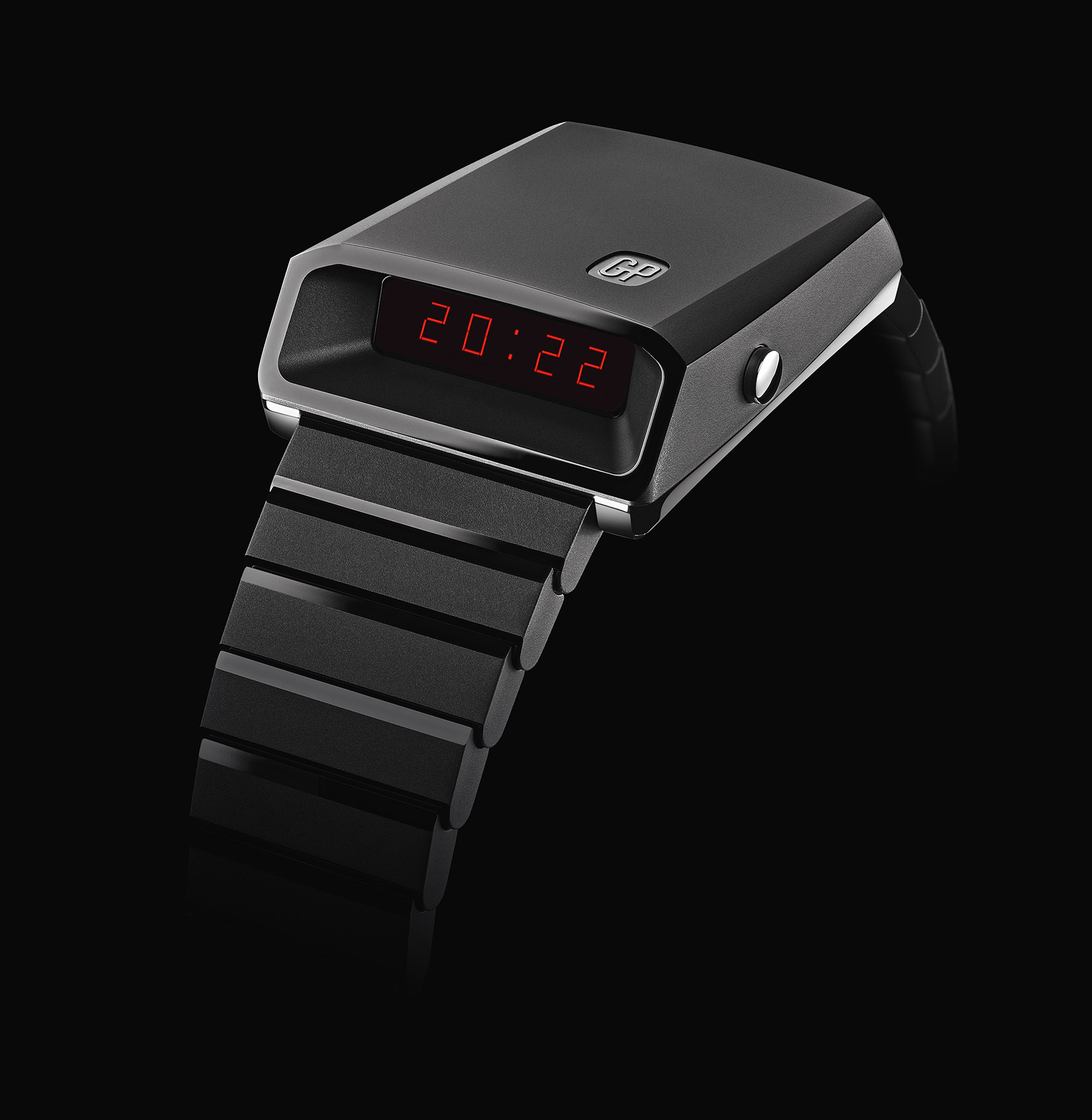 Girard-Perregaux launched the Casquette 2.0 in February 2022
Girard-Perregaux launched the Casquette 2.0 in February 2022Some Other Notable Timepieces
Talking about the watches that valiantly faced the quartz revolution, Zenith’s Defy A3642 deserves a special mention. Unveiled in 1969, the timepiece was recognised for its audacious and avant-garde design—it came with an octagonal case paired with a 14-sided bezel, and featured sharply defined lines and facets with different finishes. The timekeeper was fittingly nicknamed the coffre-fort, French for ‘bank vault’ or ‘safe-deposit box’. What made it even more distinguishable was its steel ‘ladder’ bracelet that was designed and manufactured by the famed Swiss Gay Frères company. Offering a water resistance of up to 300 metres, the Defy A3642 exuded sporty vibes and transformed into a go-to watch for outdoor activities and adventures.
In a bid to celebrate this milestone, Zenith, at LVMH Watch Week 2022, released the Defy A3642 Revival, which remains faithful to the original timepiece, albeit featuring modern, state-of-the-art technology. The updates include the sapphire crystal, the display caseback, and the type of luminescent pigments used. Another notable difference between the original and the Revival is the movement. While the former featured the Zenith calibre 2552PC/2562PC movements, the latter is equipped with the automatic Elite Calibre 670, which beats at the frequency of 28,800 vph and delivers a power reserve of 50 hours when fully wound. The movement also features a new star-shaped oscillating weight with satin finishing, visible through the sapphire display caseback.
It must be noted that when Zenith originally introduced the Defy A3642 in 1969, the watch was overshadowed by the furore around the El Primero calibre, which was released the same year. However, in 2022, with the release of its revival edition, the timepiece has gotten much-deserved attention as it exemplifies the watchmaker’s penchant for out-of-the-box creations.
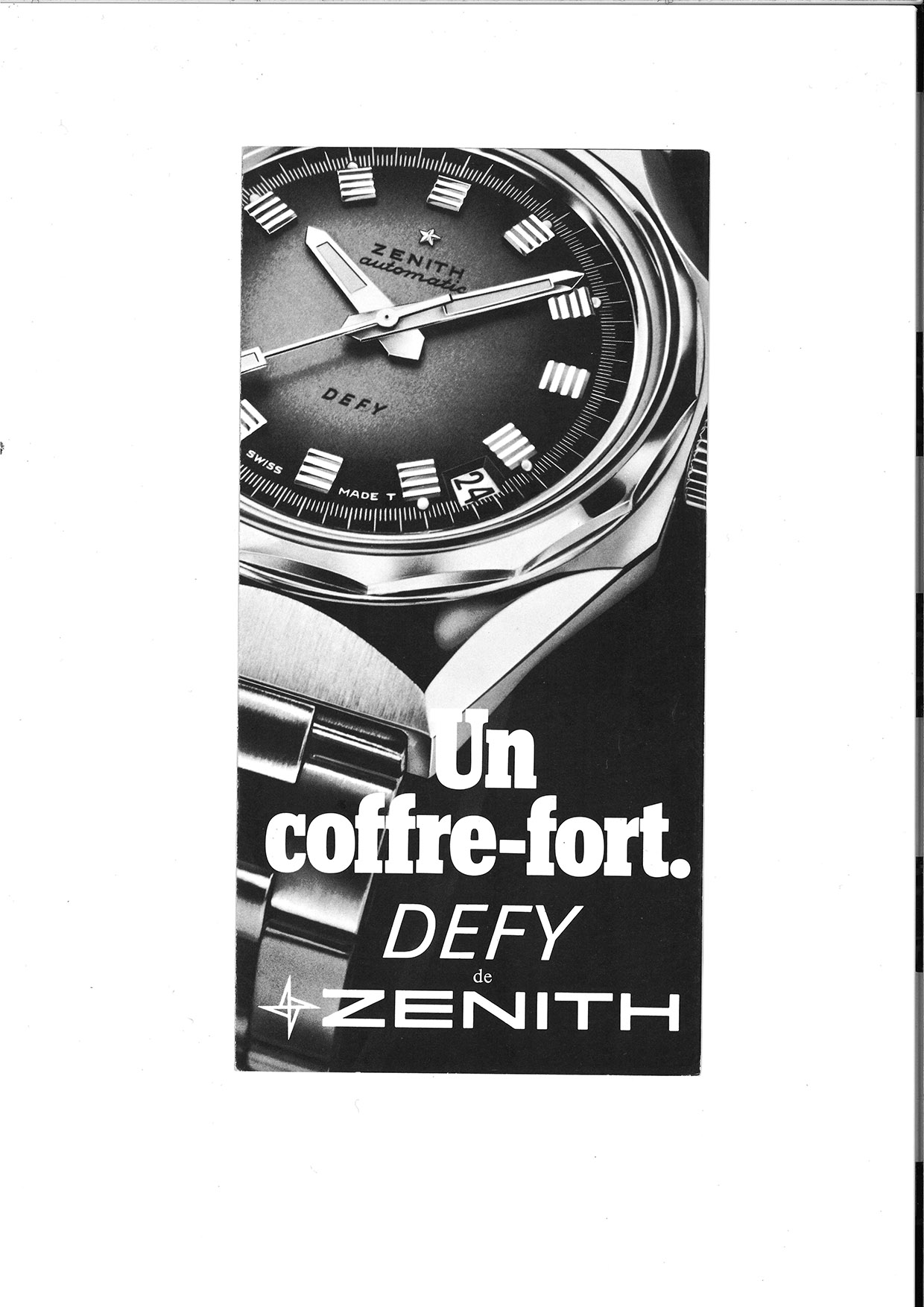 An ad for the original Zenith Defy A3642
An ad for the original Zenith Defy A3642Apart from the Zenith Defy A3642 Revival, the dominance of 1970s design has been further cemented by the launch of Tudor’s Black Bay Pro. Unveiled during this year’s Watches and Wonders Geneva, the watch takes its design codes from the popular Rolex 1655 Explorer II, released in 1971. The 42mm timepiece came to be known for its distinctive style, including the 24-hour scale that was aligned with an extra set of hour markers, to which a large orange hand pointed. The new Black Bay Pro more or less consists of such features and is equipped with the COSC-certified Calibre MT5652, which has a frequency of 28,800 vph and a power reserve of 70 hours. The movement is housed in a 39mm case that can be paired with a steel bracelet, a NATO-like fabric strap, or a new hybrid rubber and fabric two-piece strap.
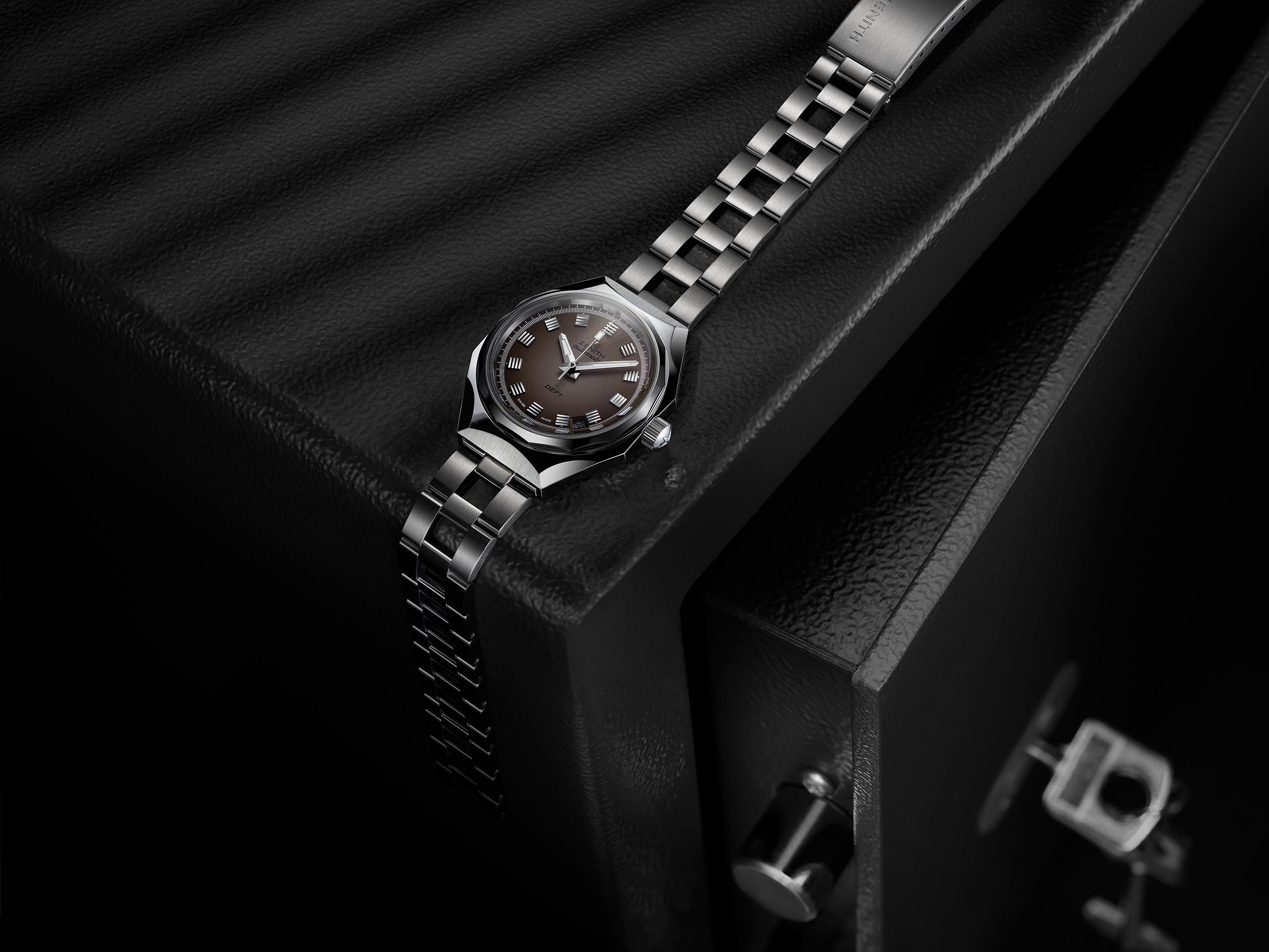 The Zenith Defy A3642 Revival remains faithful to the original watch
The Zenith Defy A3642 Revival remains faithful to the original watch
These watches—those that have been either revived or influenced by the designs of the 1970s—not only represent an era when being funky and groovy was in vogue, but also the time when the Swiss industry came together and overcame one of its gravest crises. They are a testament to the fact that innovation and creativity are the core principles of these brands, and will remain so for the foreseeable future.
This story first appeared in the Oct-Dec 2022 issue of WatchTime India. To subscribe to the magazine, click here.


















